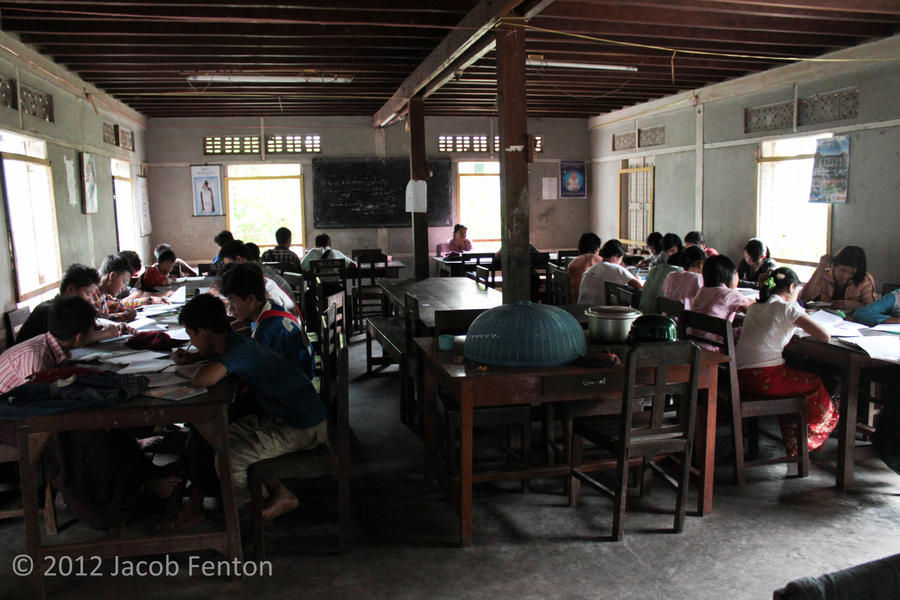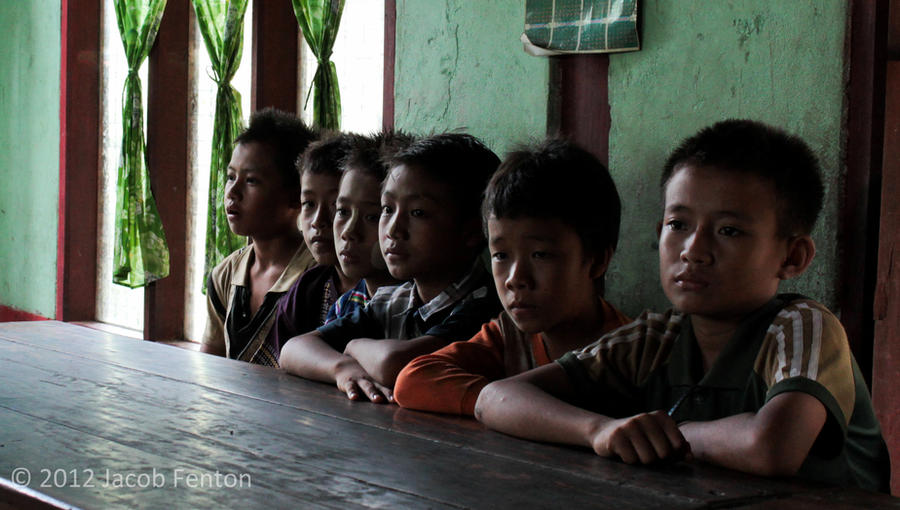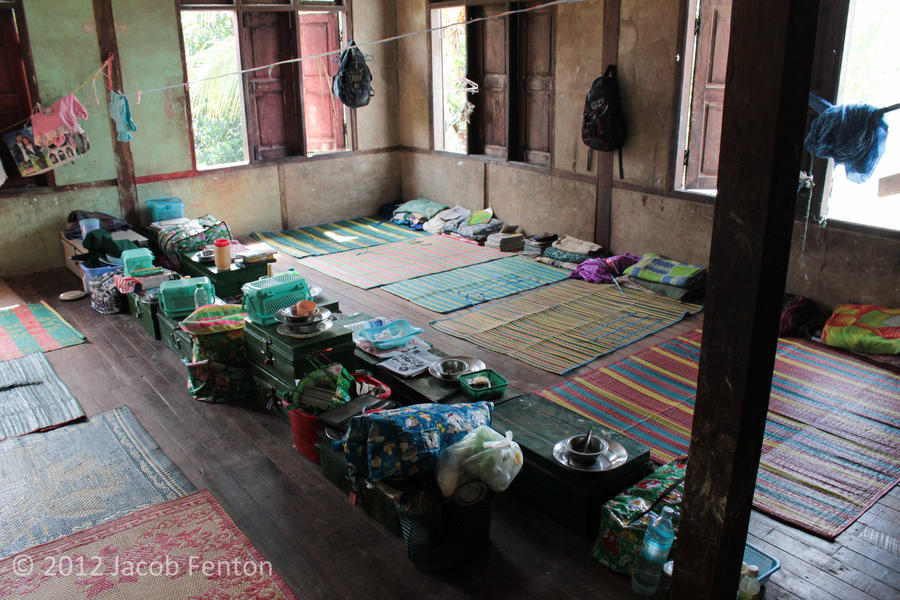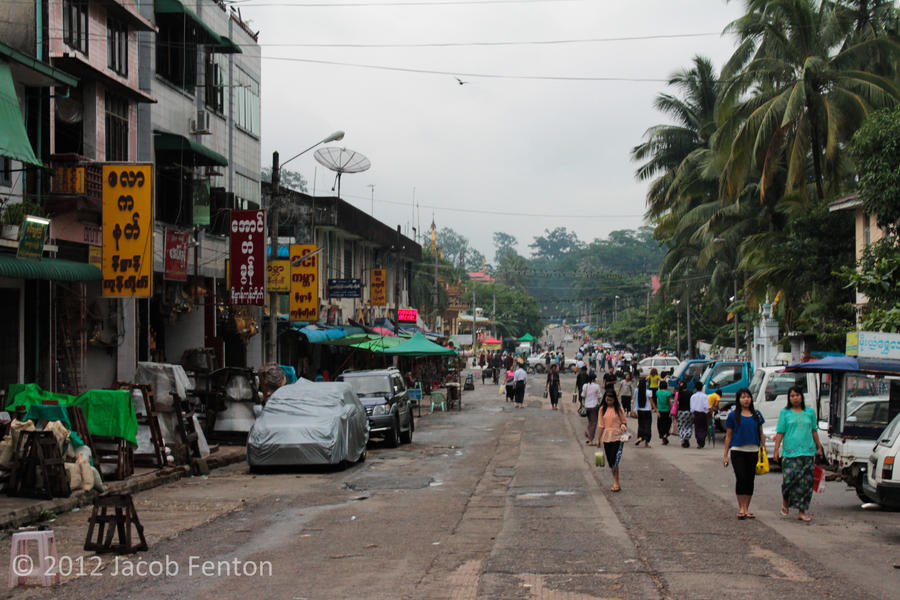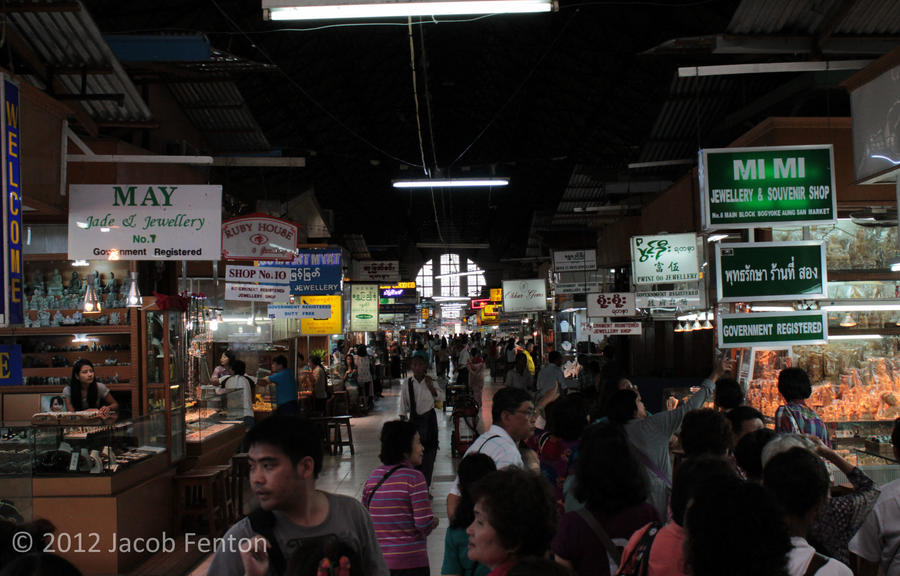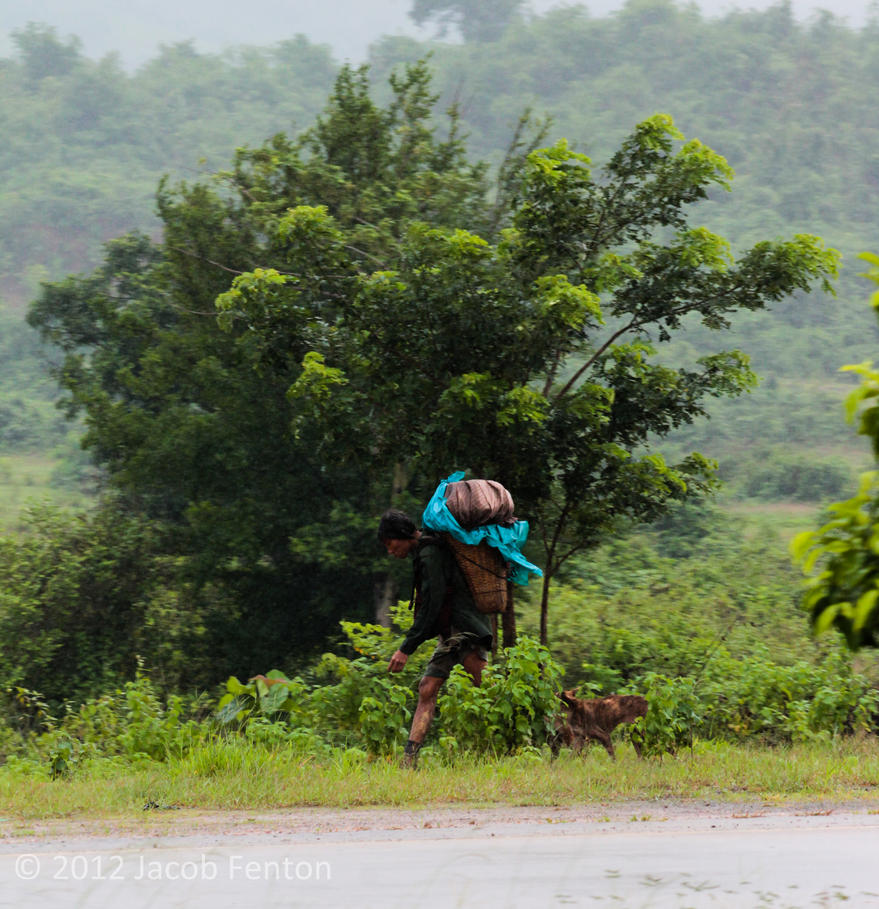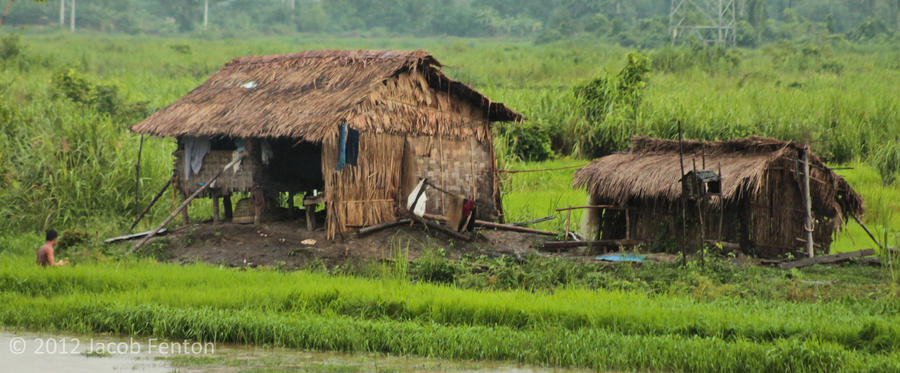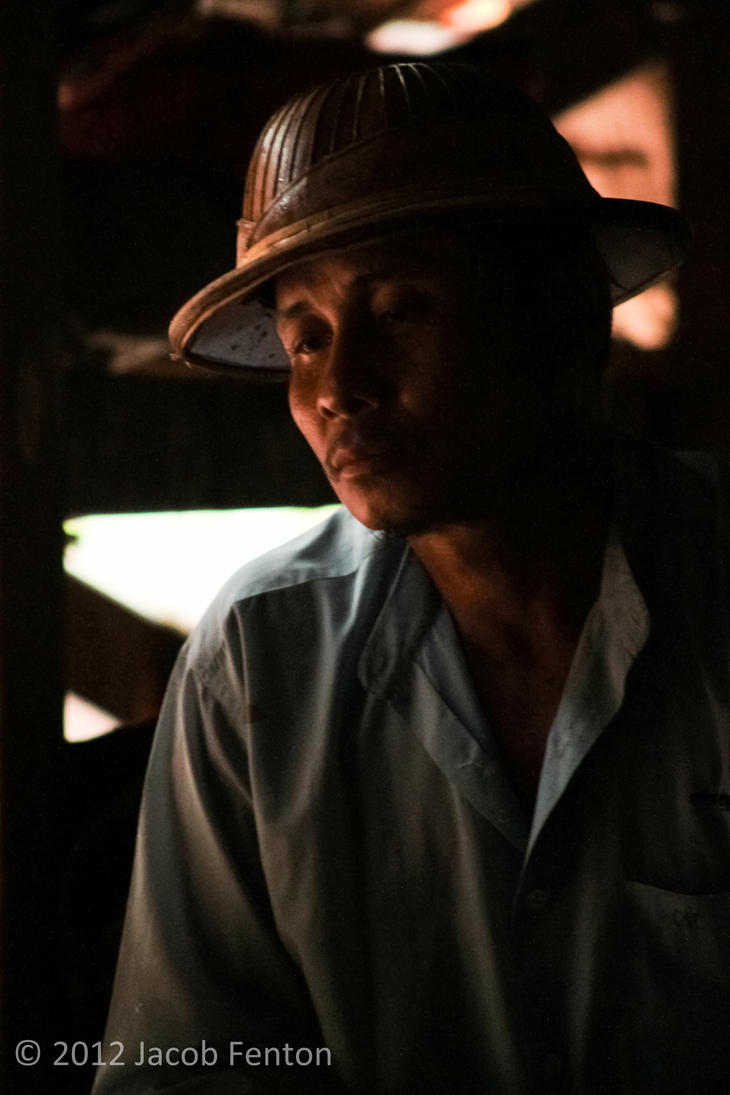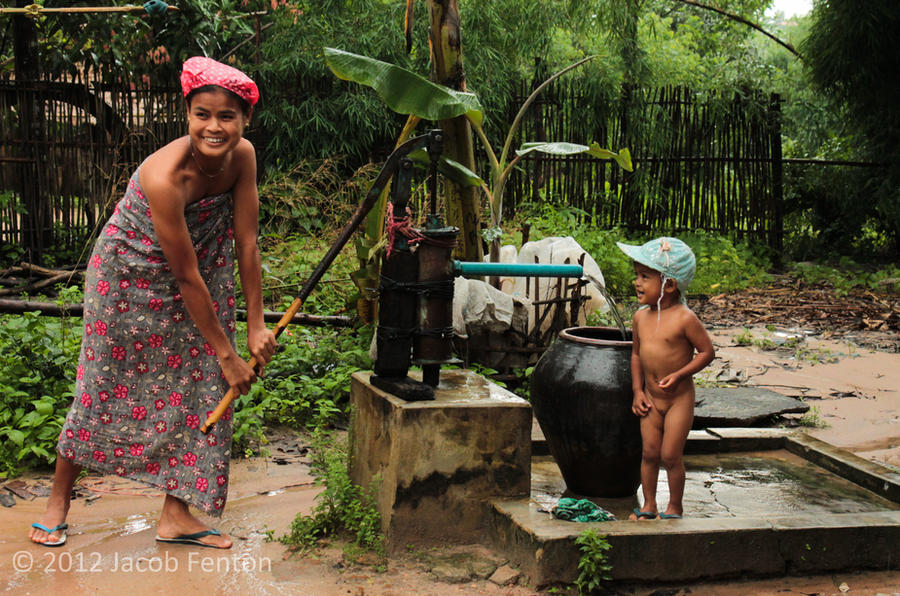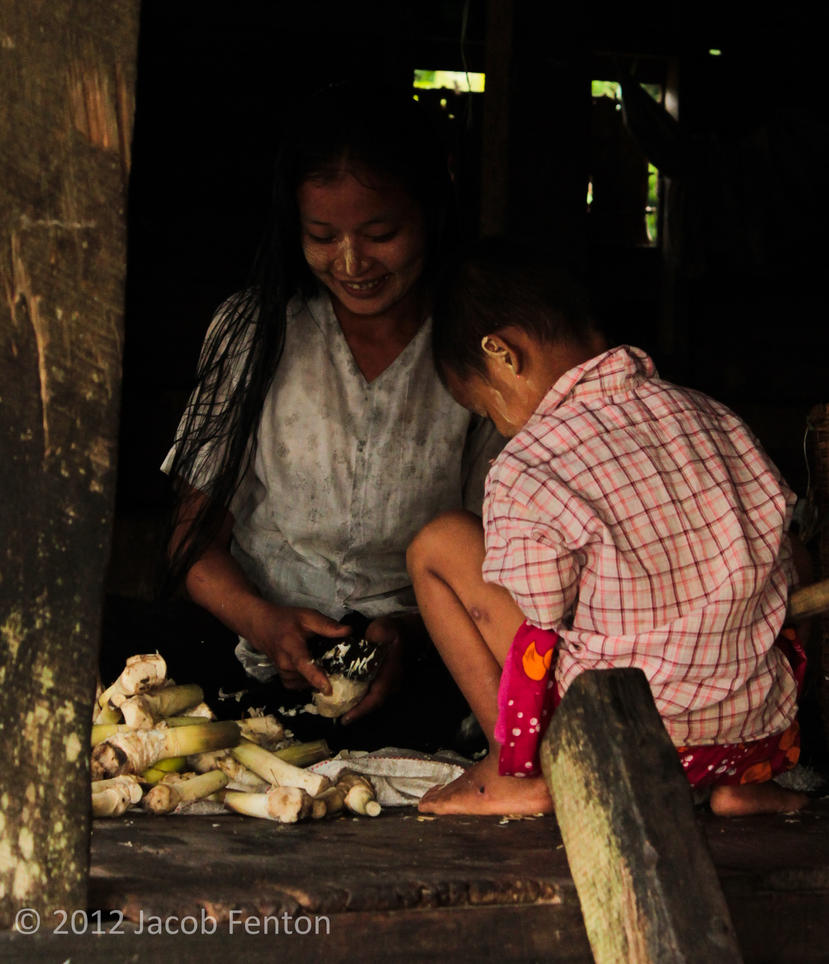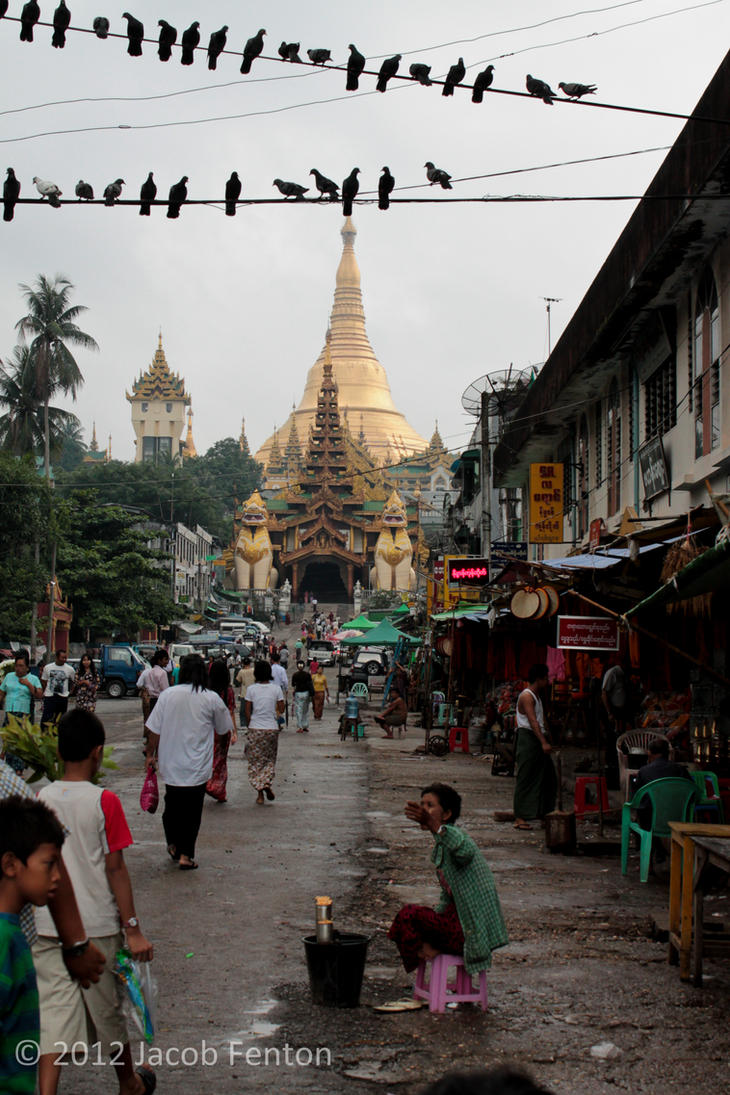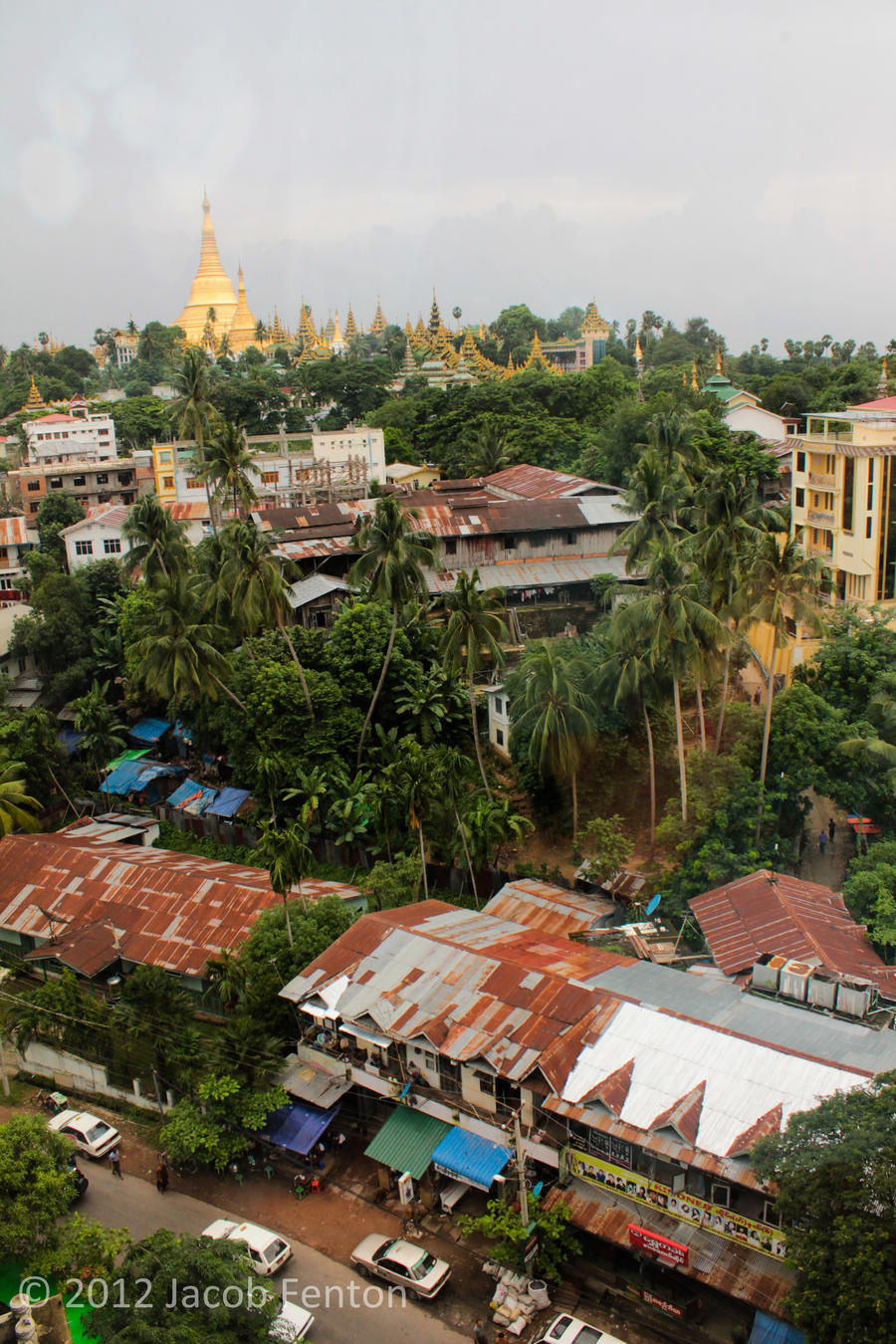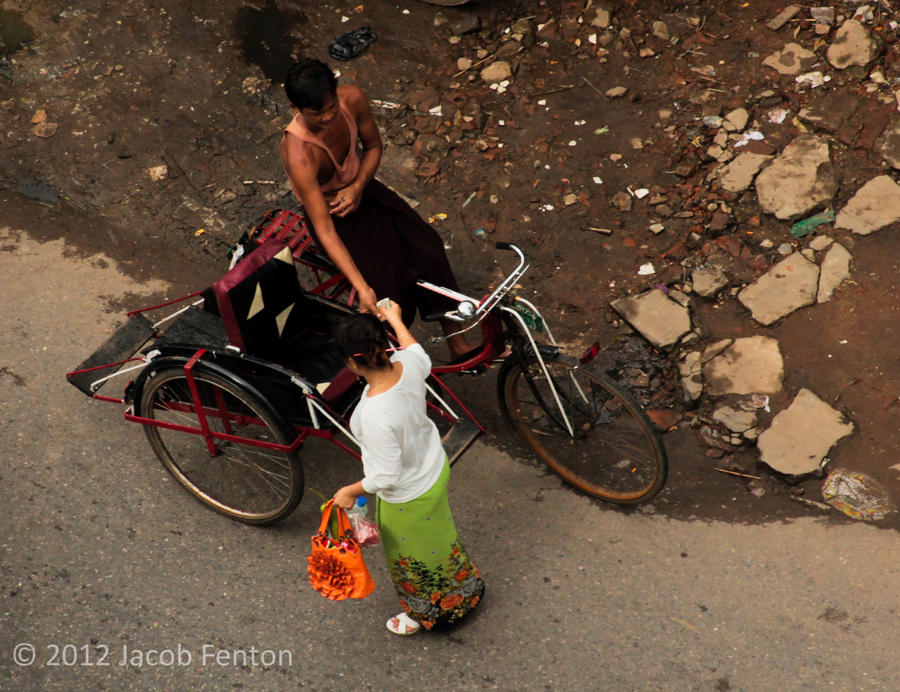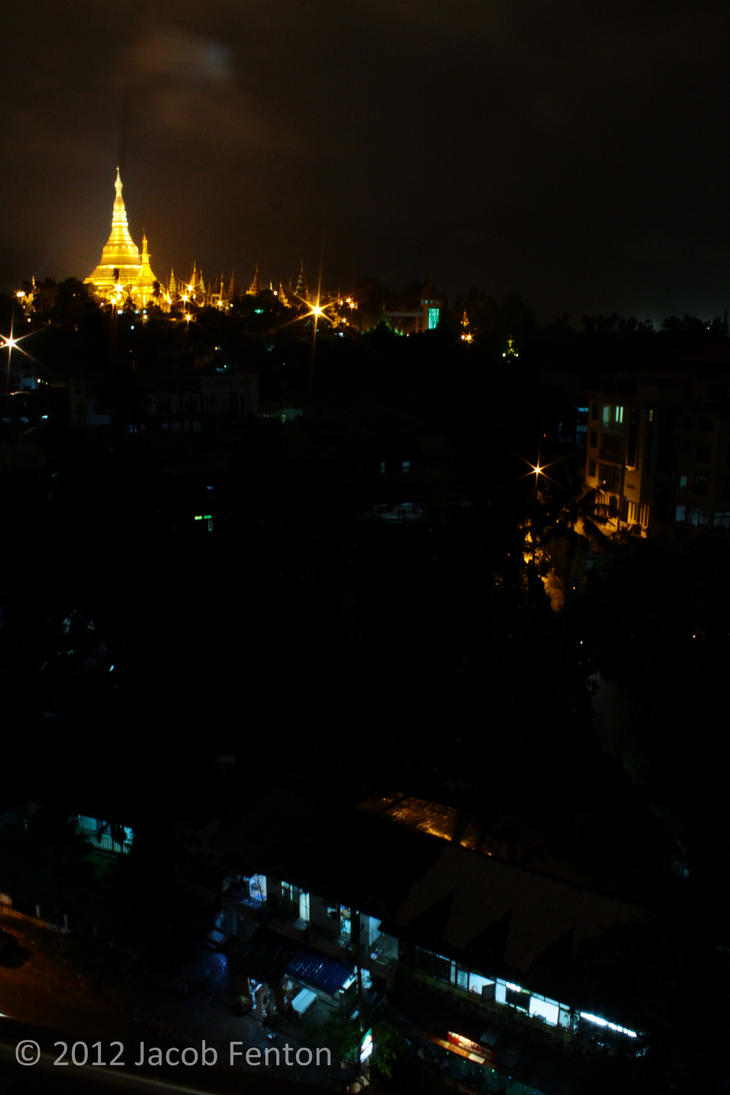Journals35
Newest
I return!
2 min read
Right. So. For those of you still paying attention, I think I'm back for a bit.
I took some time to do a bit of thinking, after my Burma project. I thought about a lot of things, and I think I ended up with more questions than answers.
But what else is new. Such is life.
Along the way I did a lot of candid photo work--driving my friends absolutely batshit crazy along the way, I'm sure. Unfortunately due to bad backup practices I'll have to a bit of digging to recover/re-edit some of the files. Plus watermarking, etc., it'll take me a while to get stuff up and posted.
But in the meantime I can share some of the stuff that I worked on along the way. Specifically, some spoken word slam stuff.
One of my all-time favorite teachers has a slam class that I was lucky enough to be a part of. I recorded some of the weekly performances I did, which I'll link below. Hopefully it'll catch your interest. Let me know what you think.
I'm hoping to get some short stories written at somepoint here, but I've been saying that for years so we'll see how that goes. It's infinitely more likely that I'll just post the occasional pseudophilisophical journal and small sets of candid photos.
Anyway. See you around.
--Chaotic
Links:
Join the community to add your comment. Already a deviant? Log In
Burma: Everything Else
6 min read
Alright, last one.
For a sort-of explanation, see this.
For the previous article, see this.
Talking about the entirety of Burman culture is a bit too ambitious for me. I've neither the time, knowledge nor inclination to investigate and exposit about every aspect of their culture--I know enough about it to know that there's a lot to know about it. It does, after all, stem from three or four different major Asian countries and then fell under European cultural dominance for a century or so. In any case, I'm going to touch on the aspects I found interesting and had extensive contact with.
I was continually fascinated by the peoples' reactions to us. Caucasians hadn't exactly been common there since the British had withdrawn from the country. While tourism has been picking up in recent years (up to 715,000 foreign visitors in 2007, as opposed to 200,000 in 2002) it's still an unusual event to see a white person on the streets. Consequently, our visits to the outlying areas caused quite a stir in the local population. I was usually swamped by the kids, who, despite being my age, barely came up to my shoulders.
It was a fascinating experience, really, because we were always hailed as these incredibly important people. Granted, some of our group was important--we were travelling with a bishop and the national director of the Church's Mission to the Jewish People (CMJ)--which meant all of us were important. We were all swarmed with people whenever we were welcomed to a complex, our hands shaken by dozens of smiling people.
During our time in Toungoo, we toured some of the neighboring villages. Each of the villages we visited had a boarding house filled with students.
The Burmese school system is not as widespread as their American counterparts. Where in the States schools are distributed to have districts covering every inhabited region, Burman schools are more haphazard. Originally run by the major curches in the area (later taken over by the State), the schools are centered around the larger church areas. This means that the districts don't cover all the children in a region. In order to go to a school, a student has to move to the local area.
Many churches near schools have boarding houses within their compounds--Essentially barn-like from the outside, with two floors, the bottom being a classroom and the upper being nothing but an open floor: the dormitory.
Each boarding house was filled with students, usually aged between ten and sixteen, though none of them looked as old as they should. We were welcomed with ceremonial song each time, which was a stunning experience. The Burmese language is naturally beautiful, and when it's applied to song with a group of children who could outmatch any high-school choir I've seen in the states, the results are spectacular.
Watch this video and/or this video to see what I'm talking about.
In general, ceremony is a large part of Burmese life. Even just the visits we did to people's houses were 'major events' by their standards. Guests are always welcomed with some amount of formality, especially when it's to a large family. Food is always brought out, even if the guests had already eaten and nobody was hungry. Everyone would sit around a table and drink tea and hold conversation for as long as awkwardness could stand, and then the guests would proceed on their way.
We spent one of the last days in Burma wandering along the street markets. We'd been curious about them ever since we first saw them when we were being driven around town. While there were American-style grocery stores here and there, there were many people who simply couldn't afford them. There was also a certain character to the street markets that simply couldn't be matched by a simple grocery store.
The markets were always crowded with people going out to get the food for the day. Though technology has greatly advanced since the markets first began, many people still didn't have refrigeration or any other method of storing food for long periods of time. Everything was available there, from bamboo to fish to watermelon, and everything was entirely fresh.
The more material-centered markets were usually indoors, either in a large warehouse that seemed to be crammed to the brim with jewelry stores and clothing outlets that all sold exactly the same things, or open to the streets with flocks of employees flitting about the displays. They were absolute hives of activity, with people swarming from one store to the next, looking for differences that I simply couldn't see.
Of course, as with any other high-traffic area, there were also little tea shops that somehow managed to serve the never-ending flood of people. There was a 'clearing' of sorts in one of the back streets of the market district that was absolutely flooded with people sitting at little tables drinking tea and otherwise enjoying a nice little afternoon snack.
I've never seen so much human life in one place. The display of life and energy was absolutely incredible, and will stay with me for a long time.
Journal Skin by Thewinator and FacundoDiaz
Join the community to add your comment. Already a deviant? Log In
Burma: The Village
6 min read
For a sort-of explanation, see this.
For the previous article, see this.
For the next article, see this.
The cities in Burma don't have the surrounding suburban sprawl common to much the rest of the world. Instead, there's a hundred feet from the city's inner tangle of roads, then a set of toll booths, and then open highway (if it can be called that). The highway cuts through the open plains on what approximates a straight-line path between major cities. While the cities alone have disparate contrasts, the villages on the outskirts are far worse. Separated by a highway and meters of dense jungle, the villages are hidden out in the plains by those visiting the cities, and they're rarely sought out. Understandably, most people would not want to confront such naked poverty while aware of their own prosperity. (This is especially true in the case of tourists. Obviously, people haven't travelled across the world to go see poor people. Even my visit was because of 'business,' really.)
The villages are the centerpoints of rice production in the country, clusters of shacks on stilts in the middle of acres of rice paddies. Most villages house about one hundred people or so, scattered throughout bits of jungle. The only paths to the villages from any paved roads are those travelled by the few mopeds owned by the villagers. These dirt paths are often treacherous and any amount of rain turns them immediately into rutted messes. It takes a true feat of driving to make it to the village 'center' without overturning the vehicle.
The people of the villages live in huts constructed mostly from bamboo, raised off the ground by stilts to protect against the flooding that is common near rice paddies. Doors and screens are foreign concepts; the huts are left open to the flow of air, with only the interior walls blocking things. The interiors themselves aren't lit, except by a solar LED lantern that provides less light than a candle and is only used in emergencies anyway. Furnishings consist of small tables and chairs, to welcome visitors with--no beds. There are only two rooms in most shacks: the kitchen, devoid of any recognizable cooking implements or appliances, and "the other room" which acts as a combination living room, bedroom, work room, and anything else that's needed.
In a way, the villages are a showcase of a purely minimalist life. The people there do not have anything beyond the most basic necessities, and often not even that. The few umbrellas they have are some of their most prized possessions, and even then they usually just walk about while it's monsooning. The simple purity of life there is a welcome change from America's information-overcharged society. That villages was one of the most quiet places I've been in a long, long time.
The people themselves are some of the friendliest I've ever met. (Granted, that could be entirely because of both my skin color and my relative wealth.) Upon our arrival at the village we were ushered inside one of their homes and promptly had steaming mugs of tea thrust at as, along with many hands of greeting. Later, we walked to the house of the village's priest, a shack somewhat larger than the rest. At this point, we'd become a spectacle, much of the village turned out to watch us, silently. While many of the adults seemed merely curious, the children were absolutely in awe of us. (Some of the shyer ones hid when they saw us looking at them, and remained so, despite much smiling and laughing from both parties.)
There was, of course, also evidence of the sheer weariness of the village life. The same simplicity that makes life so peaceful also makes the normal work of farming incredibly hard, and the wear and tear on the people shows. It makes you wonder how much of a difference a simple single-cylinder engine might make to the lives of the people there, and how much unused horsepower wanders the American road system.
How they all managed such a hospitable attitude and not one of condemnation or outright jealousy is entirely beyond me. I'm sure my camera was worth more than everything in that village combined, possibly including their rice crop. As it was, they were all flattered (and honored, as I was told later) to just have their photos taken. It was truly humbling, to hold such a position of exaltedness that merely taking a photo was this great act.
The irony of it all is the best part. These villages, which form the backbone of the rice production, in turn providing massive amounts of income for the nation, are among the poorest regions in the world; another one of those contrasts that are so common throughout Burma. Yet even this contrast isn't the end of the villages' significance. Often their other qualities are overlooked in favor of their sheer poverty. Hospitality, serenity, ingenuity--all of these are overlooked. It's a shame, really. Those villages have some of the strongest people, in terms of sheer determination, that I have ever had the honor of meeting. With some luck, they'll eventually get the lives they deserve.
Journal Skin by Thewinator and FacundoDiaz
Join the community to add your comment. Already a deviant? Log In
Burma: The City
6 min read
For a sort-of explanation, see this.
For the next article, see this.
For the previous article, see this
As with any country, the cities of Burma are the most prominent and active regions of the nation. Most of my time was spent in the two cities of Rangoon (also known as "Yangon") and Mandalay, though I did spend a few days in a town called Taungoo. In all three cases, there was an unprecedented display of activity and vitality, though not always of a healthy type. Never have I seen such a sheer show of life--American cities look like ghost towns in comparison.
Rangoon is a city of four million souls, located in the southwest region of Burma, near the delta region. The city was founded in the 11th century, and remains the country's most important economic and commercial city. It is, in a sense, the wealthiest city in Burma.
Though I tried to come without any prejudices or preconceptions, I was struck by the decay evident in Rangoon. A fresh coat of paint was rare, a clean window even more so. Many structures had quick-fix type repairs slapped across cracks or holes, and tin roofs were by far more common than traditional ones. The busy sidewalks were lined with both street vendors, and many of the 'shops' in the buildings were open to the streets as well, their walls torn down to welcome the torrent of people. The buildings themselves looked as if they might fall over in a strong gust of wind. Rangoon was also colorful. The rooftops blazed red with rust, the buildings yellow with their age., advertisements that covered everything blared out in their neon greens and yellows the latest instant coffee mix or the latest water company.
In terms of infrastructure, Rangoon is poorly underdeveloped to support its population. The basic necessities, such as water and electricity, function at a minimum; the water is consistently a pale yellow, and the electricity often cuts out periodically throughout the week. More advanced systems are also strained. The internet often cuts out, and the cellular network is less than stellar. Yet, somehow, the city struggles on.
The view from my windows was something akin to a spiritual experience. The babble of people along the street often contended with the hum of AC compressors to be heard, and there was an endless supply of visual imagery. Families sitting at tea shops along the road, children running off to school, the mother sweeping the walkway outside her apartment. It was truly incredible. The ironic contrast of overstuffed apartment buildings and tent-filled slums underneath a horizon-spanning temple of gold is an image that will stay with me for the rest of my life.
The roads were chaos. Lane markers were really just guidelines, turn signals were pointless, and turning meant "into traffic until people slowed down to avoid a collision". Never did I see anyone stopped by a police car in my two week stay. (Actually, I never saw a police car, either.) At the same time, Burman roads felt far safer than their American counterparts. I was never concerned about not wearing a seatbelt. The chaos had a kind of self-governance that culminated in an efficient system, with each driver actually paying attention to the road. Chaos begets caution.
While mostly filled with vehicles and people, the streets are also home to dozens of stray dogs and cats. While technically feral, the dogs are treated more like community pets than as vermin. Similarly, a begging cat yowling at a door is rarely shooed away (whether this is because of compassion or because it is simply ineffective, I do not know). It's a hospitality that's shown to strangers as well, a handshake and a cup of tea available to anybody in the city. There's no don't-ask-me-I'm-busy attitude there.
Mopeds competed with pickup trucks stuffed full of people as the most common mode of transportation (along with the occasional rickshaw). Every so often there'd be a shining BMW that cruised along the asphalt. Many of the distressed and frankly disgusting shops along the streets catered to smartphone-toting, stylishly dressed business people as well. Never before have I seen a more blatant flaunting of contrast than in Rangoon.
The tea shops that line the streets never seem to close, and many of the little stores are open far into the night. The flow of people along the sidewalks never stops, nor do the vehicles. During the day the city seems to thrum with energy, people conducting business everywhere, evidence of a bolstered economy obvious in the number of merchants on the street. Never have I seen a more pure example of energy. New York City may be "The City that Never Sleeps" but Rangoon is the City that Never Rests.
Journal Skin by Thewinator and FacundoDiaz
Join the community to add your comment. Already a deviant? Log In
Burma: Introduction
5 min read
See this page for a sort-of explanation.
For the next article, see this.
Burma isn't a country that many people know. Sure, people know its name, and they know it's a "developing country" (whatever that means), but they do not truly know Burma.
Not surprising, really. Not many people know their home country, either, and they can hardly be blamed for the fact. Often, we take for granted the situations of our lives. They are, to us, everyday—quite literally. There are no drastic contrasts, or major cultural differences to catch our attention. We never look at the bits we don't encounter in our daily lives, and once we establish the image of what life is like we never seek to change it. Simply put, we don't look. We act on memory, or perception. In any case, who really wants to know everything about their country?
This essay, or article, or travelogue, whatever you want to call it, isn't intended to bring you to any kind of action beyond recognizing the beauty in all the aspects of Burma: 'm going to show you the country, in its full glory. I will show you its poverty; I'll show you its riches, the high- and low points, the joys and the despairs. This isn't going to be a comprehensive analysis, nor a historical text. If anything, this will be a condensed version of the journal I kept during my trip, of all of my experiences and thoughts. Please keep in mind that, as this will be written from a single person's viewpoint, and that viewpoint was confined to a certain sector of Burman society, it will contain bias, intentional or otherwise, and there will be information left out. For that, I apologize. I will do my best to minimize both.
To begin, an overview, both historical and present-day, to provide some context for this article.
Burma, in the strictest sense, isn't a single country. Its full name is actually "The Republic of the Union of Myanmar." The entire region was populated by 134 different tribes, from various Asian countries. There are eight major tribes; the largest of which was (and is) the Burman tribe. The Burman tribe was also the most prominent on the international scene, and when the British took over the region they simply referred to the area as "Burma." The region embraced its, if you will, mongrel status upon gaining its independence, becoming something like the United Kingdom.
Obviously there was quite a bit of political turmoil during this period, following the typical pattern of the region in which the military gains control and maintains it through a dictatorship. Currently, it's best described as a semi-republican military oligarchy. Though there is a democratic parliament being constructed, the military still retains much control over the region.
While still technically a "developing nation" Burma is keeping pace technologically, with many more modern countries. Smartphones are common; laptops aren't mysterious, magical devices. The only thing separating it from the technological sophistication of nations like America and England is Burma's lack of infrastructure. The Burmese internet is notoriously unreliable, in terms of bandwidth and connectivity with the outside world (though that may have more to do with the government censorship than with the internet itself).
Burma is also rife with natural resources. It exports many different gems, namely diamonds, rubies and emeralds, though it has a large jade industry as well. There's also a large rice industry, and a quite successful fruit one as well. It even has oil. (In fact, the energy giant BP was started in Burma.) It is, to say the least, well-equipped.
Demographically, the nation is largely Buddhist, with small populations of Muslims, Hindus and Christians, though non-Buddhist religions tend to find themselves facing discrimination. The way for non-Buddhists to earn money is to farm or run small businesses. They cannot climb the corporate ladder, ascend to higher positions within government agencies, or gain rank in the nation's armed forces.
The country itself is, as I said, much like what you'd expect from a stereotypical Asian nation. Street markets, worn out buildings, crowds of people, unending humidity and heat, and strange customs. It is truly a foreign nation.
It is also a land of wonderful contrast, energy, and color. With a bit of luck, you'll be able to see the beauty in its failures, as well as its successes.
Journal Skin by Thewinator and FacundoDiaz
Join the community to add your comment. Already a deviant? Log In
Featured
I return! by ChaoticlyChaotic, journal
I return!
Right. So. For those of you still paying attention, I think I'm back for a bit.
I took some time to do a bit of thinking, after my Burma project. I thought about a lot of things, and I think I ended up with more questions than answers.
But what else is new. Such is life.
Along the way I did a lot of candid photo work--driving my friends absolutely batshit crazy along the way, I'm sure. Unfortunately due to bad backup practices I'll have to a bit of digging to recover/re-edit some of the files. Plus watermarking, etc., it'll take me a while to get stuff up and posted.
But in the meantime I can share some of the stuff that I worked on along
Burma: Everything Else by ChaoticlyChaotic, journal
Burma: Everything Else
Alright, last one.
For a sort-of explanation, see this.
For the previous article, see this.
Talking about the entirety of Burman culture is a bit too ambitious for me. I've neither the time, knowledge nor inclination to investigate and exposit about every aspect of their culture--I know enough about it to know that there's a lot to know about it. It does, after all, stem from three or four different major Asian countries and then fell under European cultural dominance for a century or so. In any case, I'm going to touch on the aspects I found interesting and had extensive contact with.
I was continually fascinated by the peoples' reaction
Burma: The Village by ChaoticlyChaotic, journal
Burma: The Village
For a sort-of explanation, see this.
For the previous article, see this.
For the next article, see this.
The cities in Burma don't have the surrounding suburban sprawl common to much the rest of the world. Instead, there's a hundred feet from the city's inner tangle of roads, then a set of toll booths, and then open highway (if it can be called that). The highway cuts through the open plains on what approximates a straight-line path between major cities. While the cities alone have disparate contrasts, the villages on the outskirts are far worse. Separated by a highway and meters of dense jungle, the villages are hidden out in the plains
Burma: The City by ChaoticlyChaotic, journal
Burma: The City
For a sort-of explanation, see this.
For the next article, see this.
For the previous article, see this
As with any country, the cities of Burma are the most prominent and active regions of the nation. Most of my time was spent in the two cities of Rangoon (also known as "Yangon") and Mandalay, though I did spend a few days in a town called Taungoo. In all three cases, there was an unprecedented display of activity and vitality, though not always of a healthy type. Never have I seen such a sheer show of life--American cities look like ghost towns in comparison.
"The City of Gold II"
Rangoon is a city of four million souls, located in the
Burma: Introduction by ChaoticlyChaotic, journal
Burma: Introduction
See this page for a sort-of explanation.
For the next article, see this.
Burma isn't a country that many people know. Sure, people know its name, and they know it's a "developing country" (whatever that means), but they do not truly know Burma.
Not surprising, really. Not many people know their home country, either, and they can hardly be blamed for the fact. Often, we take for granted the situations of our lives. They are, to us, everyday—quite literally. There are no drastic contrasts, or major cultural differences to catch our attention. We never look at the bits we don't encounter in our daily lives, and once we establish the imag
